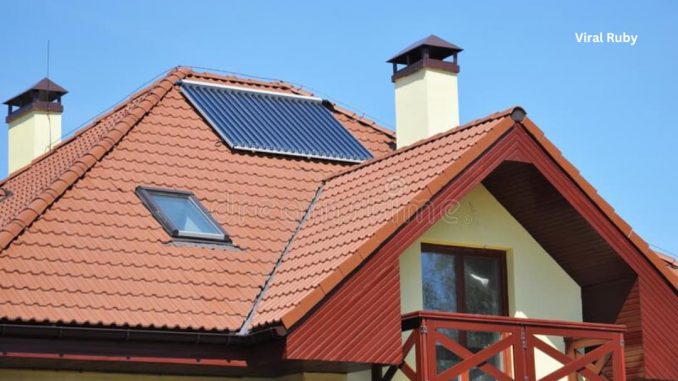
What Is Roof Flashing Made of and Used For?
If you’re curious about roof flashing, you’ve come to the right place. In this article, we’ll explore what it is, how it’s used, and how to repair it. You’ll also learn why you might need to replace it. Hopefully, these answers will be helpful for you when you need to repair your roof.
What is roof flashing?
Roof flashing is a critical component of a roof. It seals up gaps around the roof, prevents moisture from entering the structure, and is weather-resistant. It must also accommodate movement. Because roofing materials expand and contract over time, flashing must be flexible and durable to accommodate these changes. This movement can be daily or seasonal, depending on climate and other factors.
Flashing can be made of various materials, including metal and asphalt. Metal flashing, for example, has a zinc coating to protect against corrosion and is a popular choice for metal roofs. Lead is another popular material used for flashing. It is the second most durable metal, and can resist water damage for 200 years or more.
Roof flashing is a thin strip of metal that is used to divert rainwater away from roof seams and other roof parts. This material is used to prevent leaks in the roof, and it can easily be installed.
What is roof flashing made of?
Roof flashings are made of metal and are used to keep water out of openings in the roof. The tops of vents are covered with metal flashing while the bottom is made of rubber compression fittings. Both types of flashings are placed under the roofing and overlap the edges.
There are several types of flashing, but some of the most common are step flashing and continuous flashing. Step flashing is a simple, straightforward, and inexpensive alternative to continuous flashing. This material can be shaped easily and is resistant to corrosion. It is often used around chimneys, eaves, and on ridges and hips.
Steel is the most common material for roof flashing. This material has good aesthetic qualities and is corrosion-resistant, particularly if it is galvanized. Some building codes specify specific materials for flashing and may specify a minimum thickness. Generally, building codes require at least 26-gauge galvanized steel. Modified bitumen roofing tape is also used to aid in roof flashing, but it must meet building code requirements.
What is roof flashing used for?
There are a variety of uses for roof flashing, including protecting the edges of your roof from damage, directing water away from your home, and protecting against extreme temperatures. Flashing can be made of metal, plastic, or both. Metal flashing is the most durable, and is typically made of copper. Plastic flashing is cheaper but can wear down with exposure to direct sunlight.
The main reason for using flashing is to keep water out of the roof structure. It can be made of different metals, including aluminum, lead, and copper. This type of roofing material helps prevent water damage by preventing water from penetrating the roof and damaging the wall cladding. It also helps keep gutters from overfilling, which can cause water damage and lead to the growth of harmful mold.
Proper installation is crucial. Installing the flashing properly is the best way to ensure that it stays in place. Avoid using nails to secure flashing to your roof, because this can leave unnecessary holes in the structure. A better alternative is using roofing cement, which creates a waterproof seal between your roof and flashing.
What is roof flashing repair?
When it comes to roofing, flashing is an important element. It protects the roof against water damage and helps keep it dry. However, it can become damaged with the weather, which means that it must be repaired or replaced. Fortunately, many roofers in London are well-versed in this area and will be able to help you.
Flashing is used to seal roof joints, vents, and chimneys. It’s also used on roof valleys and dormer windows. Traditionally, flashing was made of lead, which was easy to form into various shapes. These days, however, many people choose zinc sheet instead. Flashing is essential for protecting the joints of your roof, because without it, water can enter and cause damage to the structure and the foundations of your home.
If you notice a leaky roof, one of the reasons may be because the flashing has become rusted or ripped. This can be caused by various factors, including the freezing and thawing cycles. When ice forms underneath a hole in the flashing, it causes the hole to expand. Eventually, water will enter the hole and cause a leak. Hence, it is important to get your roof inspected by a professional roofing contractor to avoid any potential problems.
What does flashing do on a roof?
Roof flashing is a small strip of metal that is installed on the roof to keep water out and protect against leaks. Usually made of lead, aluminum, or galvanized steel, flashing is installed to seal any gaps in the roof’s exterior walls and seams. This helps keep moisture out and prevents mold and mildew growth.
Roof flashing also prevents water from entering the roof structure, and is used in conjunction with shingles to provide weather-resistance to the cladding of the walls and ceiling. This material also prevents gutter overflow and the growth of harmful mould. It’s crucial to install roof flashing properly, otherwise you risk compromising the overall integrity of your roof.
When installing roof flashing, remember that it needs to cover the entire area where your roofing materials meet. To do this, you can use a sharp knife and cut the flashing material along the shingles. Next, fold the top edge over each shingle by at least 2 inches. Then, secure it in place with roofing nails or screws.
What are the different types of roof flashing?
Roof flashing is a type of protective material that is used to seal openings in a roof. It is usually made of metal, especially near windows and points of structural support, and is used to direct water away from the building. There are several different types of flashing. These include cap flashing, sill flashing, and through-wall flashing. In most cases, flashing is used to prevent water from entering the building through a vent or pipe. Another type of flashing is kickout flashing, which is installed at the bottom of the wall. It serves to deflect water away from the wall.
Steel is the most common material for roof flashing. This material is lightweight, easy to form, and corrosion-resistant. However, it must be coated if it is to be used on an alkaline surface. Copper, on the other hand, is a much more expensive option than steel, but it will last for a much longer time. A good local roofing contractor will be able to tell you which type of metal will be the best choice for your home.
Does flashing go over or under shingles?
When it comes to roofing, you need to understand the importance of roof flashing, which is a thin metal sheet that directs water away from the critical areas of your roof. Basically, roof flashing helps direct water away from the joints and seams of your roof and keeps it from penetrating into your home.
Roofing flashing comes in a variety of shapes and sizes. It may come pre-bent, or it may be bent by hand. Whether it’s under shingles or over plywood, roof flashing is essential to forming a watertight seal.
In addition to acting as a gutter for your roof deck, roof flashing is used to direct water away from chimneys and vents. It should be large enough to fit around these pipes, and be larger than the diameter of the pipes. If it’s too small, a professional might be needed to replace it.
Roof flashing is an important part of a home’s functional integrity, and is required by code. There are several types, and you should understand what they do before deciding on which type to install on your home.
What is flashing and why is it important?
Roof flashing is the metal trim that covers roof penetrations, such as vents, chimneys, and skylights. It protects the components of the roof from water and prevents them from corroding. Without flashing, water can damage roof components and saturate them. Having the proper roof flashing is essential for preserving the integrity of a home.
Roof flashing protects internal components of the roof by directing water away from the joints and towards the gutters. With proper care, roof flashing significantly reduces the risk of roof leaks. It also protects against ice dams during winter. Besides protecting the roof from water damage, it can also prevent small animals from entering the attic.
Roof flashing consists of two types. The base flashing is the bottom piece of the flashing and the counter-flashing is installed above it. Both pieces are essential for the proper function of the roof.

Leave a Reply